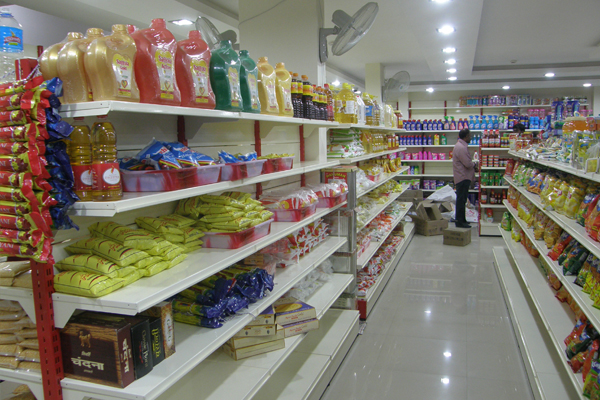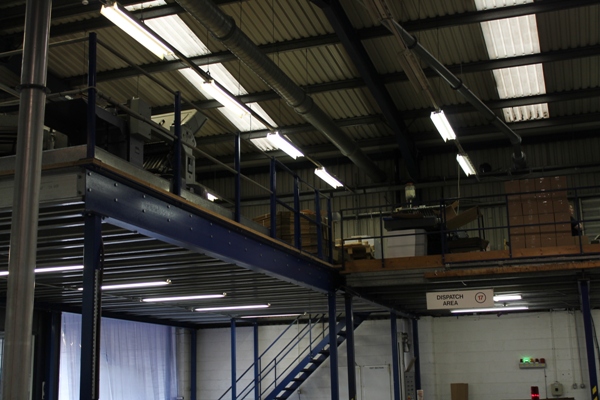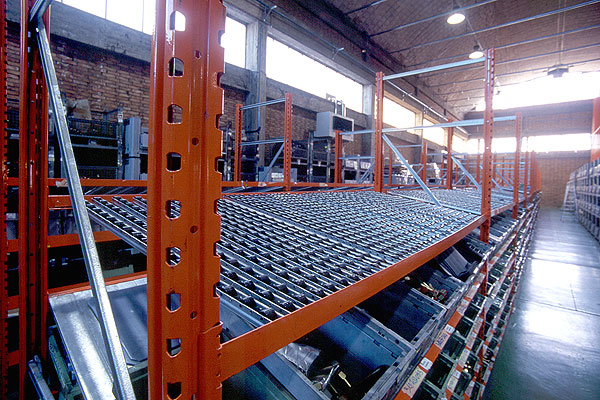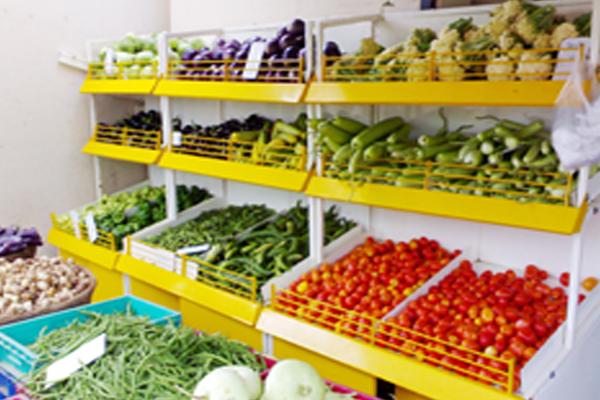Exploring The World Of Pallet Flow Racks
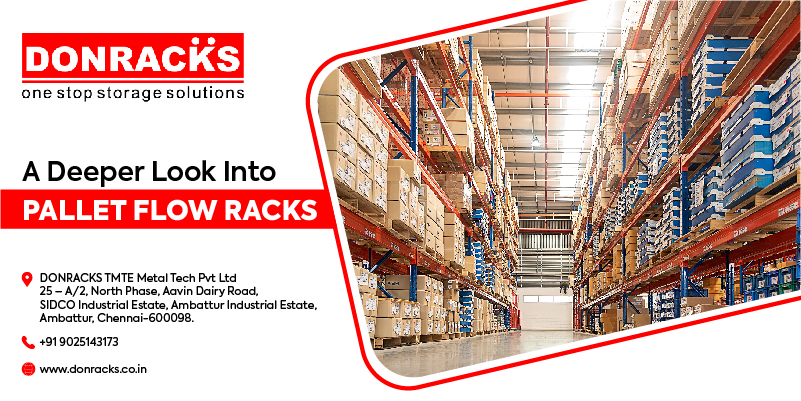
We live in a time when customers are always looking for better storage solutions. The demand for innovative storage solutions is high in both the commercial and industrial environments. One such storage solution proving to be versatile, economical and practically effective is the pallet flow rack.
Pallet flow racks could be the perfect solution if you need to maximise the limited storage space in your industry or warehouse. Wonder why? Delve deeper into our blog to find out more! We have explained in meticulous detail everything you need to know about pallet flow racks and their benefits.
Pallet Flow Racks: An Introduction
Pallet flow systems are unique in concept and design. They are considered as high-density storage systems because they can store more pallet loads in the same space used for standard racks. The rack system requires an aisle for loading and one for unloading, thus reducing construction and operational expenses.
Pallet flow racks are of two types:
- FIFO or First In First Out is a system that is loaded from the back and unloaded from the front.
- LIFO or Last In First Out is a system that is both loaded and unloaded from the front.
These racks are also known as dynamic flow racks or gravity flow racks because these racking systems use the power of gravity. The racking system is a clever combination of complex braking systems, elevated rails, wheels, rack columns, crossbeams, conveyors, and roller tracks. The tracks are connected to the rack columns at a four per cent inclination. This mechanism controls the speed of the moving pallet that sits on the roller tracks. To understand how the pallet flow racking system works, we need to look at its various components.
The Pallet Flow System And Its Components
Essentially, a pallet flow system’s components can be divided into two parts:
- Static parts that support and keep the system stable.
- Dynamic parts that move the pallets down the flow lane.
If necessary, your storage rack manufacturer can design a pallet flow system with 20 or more pallets. While there are many versions of the flow mechanism, the fundamental concept is to load pallets at one end and unload them at the opposite end. Sturdy inclined rollers and wheels facilitate the smooth flow of the pallets. As the pallets are loaded, they move down the inclined tracks towards the unloading point.
The entire pallet flow system comprises four main components:
1. The loading point:
The first part of the system is the entry funnel of the loading section. This part ensures that the pallet is placed accurately on the roller track and flows unhindered down the track.
2. Roller tracks
One of the system’s main components, the roller tracks, has a loading capacity of up to 240 kgs. They are made of super-strong, high-quality materials and are fitted with steel ball bearings to ensure long-lasting service.
3. Central component
The central component supports the roller track profile. The profile may be U or L-shaped. Each pallet stop is fitted with brakes to ensure a smooth flow. Additionally, pallet ramps are fitted at the exit of each flow lane. They bring the incoming pallets to a gentle stop and prevent them from crashing onto the loaded pallets.
4. Retrieval system
The retrieval system comes with a separator that enables easy and safe retrieval of the first pallet at the unloading point. The separator separates the first pallet in the rack, and once it is removed, the next pallet automatically moves forward. The inclined rails and brakes facilitate the movement of the pallets without any impacts or jolts. Hence, the pallet and the products are protected.
The benefits of the pallet flow system:
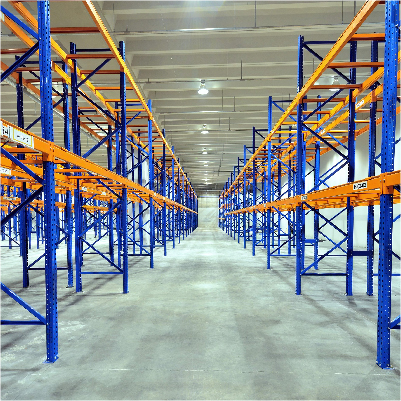
The pallet flow system provides a high inventory rotation and storage density. It is an engineering marvel that epitomises efficiency, durability, capacity, and practicality. This racking system is a boon for warehouses with a high volume of activity. By investing in pallet flow racks, you are improving your warehouse’s storage capacity in multiple ways.
Pallet flow racks allow you to:
- Increase loads of different sizes.
- Streamline the storage process.
- Optimise the available space
- Customise your process
- Prevent damage to the stored goods
- Increase the efficiency without energy consumption
- Facilitate automatic inventory rotation
- Complete loading and unloading within a short period
Pallet racks are apt for high-density warehouses. In recent times, another new concept of racking solutions is garnering the warehouse owners’ interest. Known as Push-Back Racking, it is a live storage system for LIFO type load management. Let’s take a closer look.
Push-Back Racks: A New Trend
The name is derived from the working mechanism of the racks. Push back racks for pallets have a single loading and unloading point, which is the basic concept of the LIFO system. This racking system eliminates the need for separate loading and unloading aisles. Only a single aisle is required where the pallet is loaded at the front of the structure and pushed back to make way for the next one. Each rack is designed to hold up to seven pallets. The entire rack system is inclined towards the aisle using a series of steel rollers. With single-aisle accessibility, pallets can be loaded and unloaded with minimum effort.
Currently, both push-back racks and pallet flow racks are equally popular and in demand. If you are confronted with choosing either one, you should base your choice on your warehouse operations. Both rack types are excellent in space utilisation. These are the racks you will want to invest in, especially in the food and beverage industry.
The benefits of either rack can only be fully gained if they are used for the right application. We suggest you consider the availability of space, your niche industry, and your picking processes before you make your choice.
When to use the pallet flow rack and push-back rack
This dilemma of when to use the right rack could be yet another issue. Here are some simple tips to help you understand the right use of these two rack types.
Pallet flow racks are ideal for:
- Perishable food products
- Fragile products like glass and ceramic ware
- Carbonated beverages
Push-back racks are suitable for:
- Coolers and freezers
- Warehouses with smaller space
- Items with longer shelf-life
Since push-backs are limited to only six pallets, they are not ideal for large-volume storage.
Donracks, Chennai: Your Reliable Storage Rack Manufacturer
Struggling to pick the right rack for your warehouse? Our team at Donracks in Chennai can simplify your decision-making process. From checking your warehouse layout to understanding your workflows, we can help you pick the right racking system that guarantees high economic feasibility. We are happy to lend our expertise for your benefit. Call our team today.

